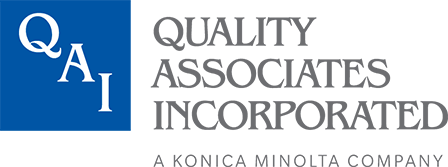If you’ve ever squinted at a grainy microfilm reader in a library or struggled with an ancient microfiche machine that seems to have been designed before the invention of user-friendly interfaces, you know the frustration of trying to access information trapped in these legacy formats. While microfilm and microfiche served their purpose brilliantly for decades as space-saving storage solutions, they’ve become increasingly problematic in our digital-first world.
The good news? Converting these archives to digital formats isn’t just possible, it’s becoming essential for organizations that want their historical information to remain accessible and useful. However, every microform conversion project is different. The difference between a successful digitization effort and an expensive disappointment often comes down to following proven best practices.
Understanding What You’re Working With
Before you can properly convert microfilm or microfiche, you need to understand precisely what you have. Those reels of microfilm sitting in storage boxes might contain decades of newspapers, government records, or corporate archives, but they could also vary significantly in quality, reduction ratios, and physical condition. Similarly, sheets of microfiche may appear identical at first glance, but they could represent completely different document types, requiring different treatment.
The first mistake for many organizations is assuming that one approach fits all microform conversion projects. The reality is that practical document imaging requires careful assessment of each collection’s unique characteristics. A professional microfilm scanner might handle some materials beautifully while struggling with others that require specialized handling.
The Critical Role of Proper Preparation
Here’s something that catches many people off guard: successful microform digitization actually begins long before you ever turn on a microfiche scanner. The preparation phase can make or break your entire project, and it’s where corner-cutting inevitably leads to problems down the road.
Professional conversion services understand that each reel of microfilm must be inspected for physical damage, contamination, or deterioration that could impact scanning quality or damage equipment. Similarly, microfiche sheets require evaluation for scratches, fading, or other condition issues that may necessitate special handling during the digitization process.
But preparation goes beyond just physical inspection. You also need to understand the intellectual content of your materials. Do you need to keep sequential pages in order, or are you working with random microfilmed documents? This information affects everything from how you configure your microfilm scanner to how you structure your final digital deliverables.
Resolution and File Format Decisions That Matter
One of the most common questions organizations face is determining the appropriate resolution for their conversion project. While it may seem logical to scan everything at the highest possible resolution, this approach can result in unnecessarily large file sizes without yielding meaningful quality improvements. The key is matching your scanning parameters to your intended use.
For basic reference purposes, moderate resolution settings may suffice, but if you’re dealing with materials that require detailed research or meet archival standards, you’ll want higher resolution capture. Modern document imaging technology can extract remarkable detail from microform materials, but only when properly configured and operated by trained professionals.
File format selection is equally important and often misunderstood. While PDF files seem like the obvious choice for easy viewing and sharing, they’re not always the best option for long-term preservation or specialized research applications. Professional conversion services understand these nuances and can guide you toward formats that best serve your specific needs.
The Equipment Really Does Matter
Not all microform conversion equipment is created equal, and the difference between consumer-grade and professional systems can be dramatic. A basic microfiche machine, designed for occasional viewing, is fundamentally different from a production microfiche scanner that is engineered for high-volume conversion projects. Similarly, the microfilm reader gathering dust in your basement probably isn’t going to deliver the quality results you need for a serious digitization project.
Professional microfilm scanner systems incorporate sophisticated optical components, precise film transport mechanisms, and advanced image processing capabilities. These systems can handle various microform formats, automatically compensate for common issues such as uneven illumination or film curvature, and maintain consistent quality across thousands of images.
Partnering for Success
The most important best practice is recognizing when a project demands professional expertise. While small-scale microform viewing might be manageable with basic equipment, comprehensive conversion projects require specialized knowledge, professional-grade equipment, and systematic quality control processes.
Experienced conversion services bring more than just equipment to the table. They understand the intricacies of different microform formats, have solved the technical challenges you haven’t encountered yet, and can ensure that your digital files meet whatever archival or compliance standards your organization requires.
The bottom line is that microform conversion done right transforms inaccessible legacy information into valuable digital assets that can support your organization for decades to come. Incorrect microform conversion can create expensive problems that compound over time. Following proven best practices and partnering with specialists who understand these materials can make all the difference in achieving the results you need.
[Created by a human with the assistance of Claude.AI.]


